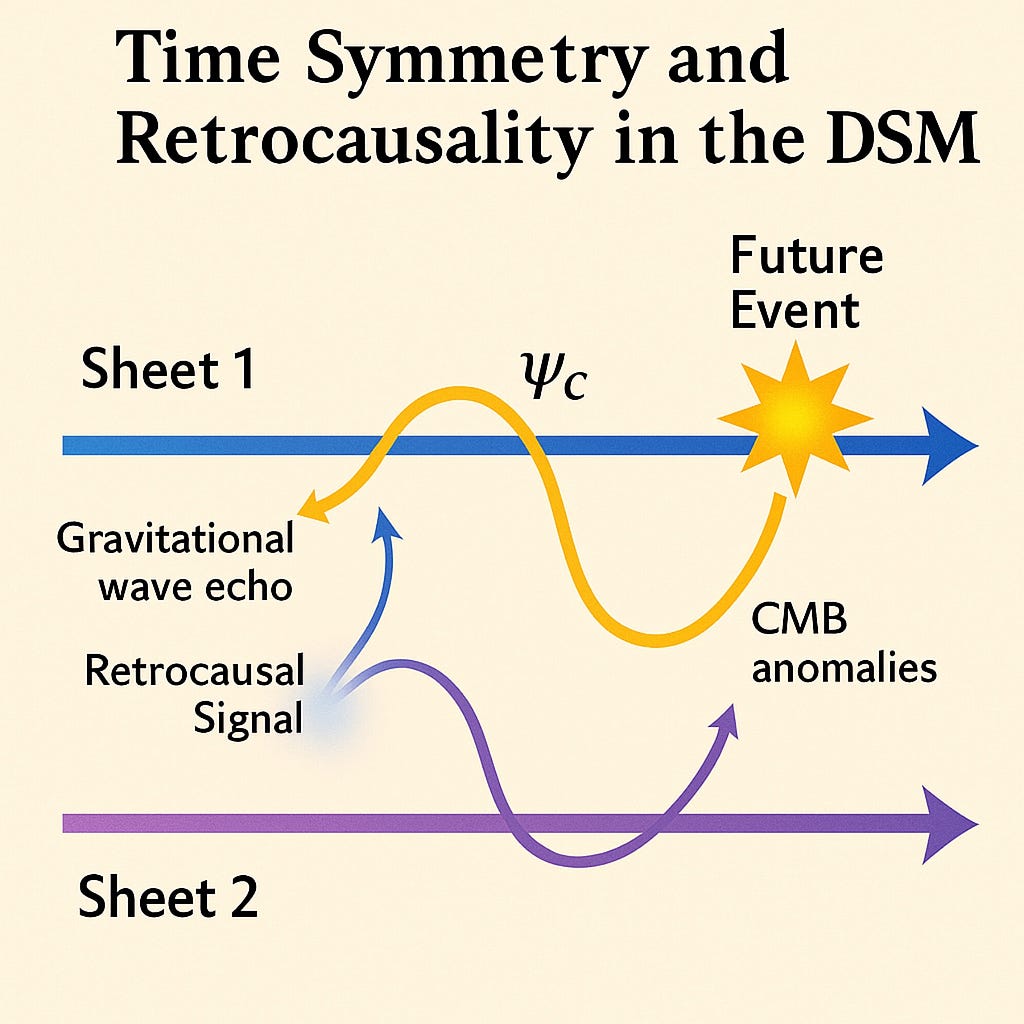Medium
1M
174

Image Credit: Medium
Time Symmetry and Retrocausality in the Dual Sheet Model: Could the Future Shape the Past?
- The Dual Sheet Model (DSM) envisions a universe with Sheet 1 and Sheet 2, each having its own arrow of time, connected through bimetric gravity.
- Sheet 1 represents our universe with a positive cosmological constant, leading to expansion and the familiar arrow of time where entropy increases.
- Sheet 2 is a hidden mirror realm possibly dominated by antimatter, with a negative cosmological constant that might cause contraction, leading to a backward arrow of time relative to Sheet 1.
- The DSM suggests the possibility of retrocausal signals from the future to the past through interactions between Sheet 1 and Sheet 2.
- Time symmetry allows for interactions that create closed timelike curves (CTCs) where future events influence past ones, challenging standard physics notions.
- Observational signatures of retrocausality, such as time-symmetric echoes in gravitational waves or anomalies in the Cosmic Microwave Background, could be detectable.
- The DSM's implications extend to human cognition, proposing that retrocausal signals might influence phenomena like déjà vu or precognitive dreams.
- The DSM's exploration of time symmetry challenges traditional views on causality, free will, and the connection between human experience and the universe.
- By rethinking time and reality, the DSM invites us to question the nature of time itself and consider the possibility of the future influencing the past.
- The DSM's ideas open new frontiers for science and philosophy, urging further exploration of this cosmic mystery.
- References: Planck Collaboration (2020) and LIGO Scientific Collaboration and Virgo Collaboration (2016).
Read Full Article
10 Likes
For uninterrupted reading, download the app